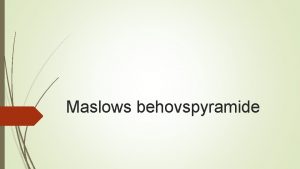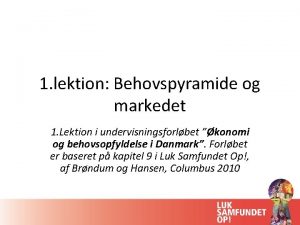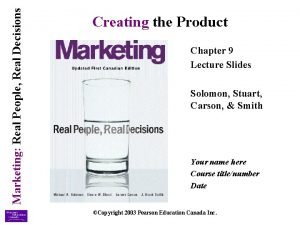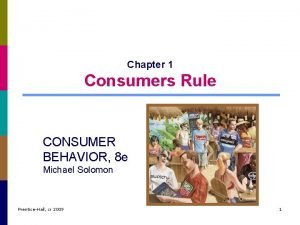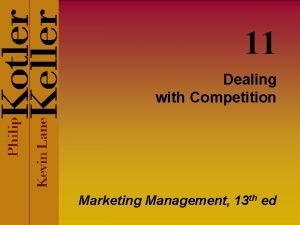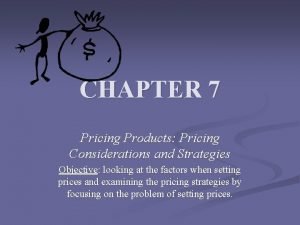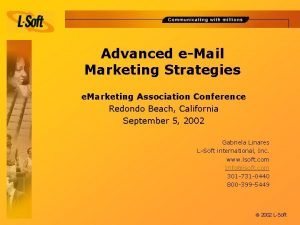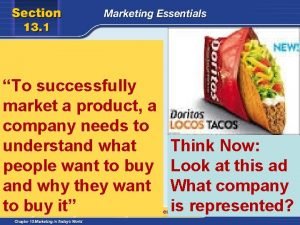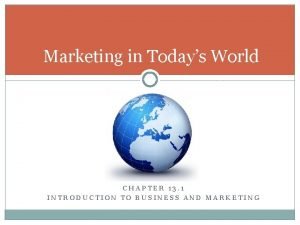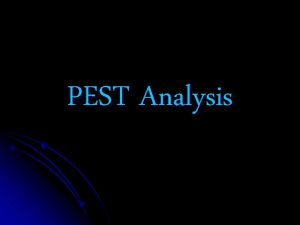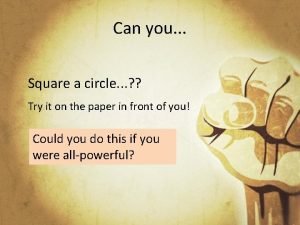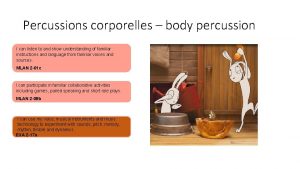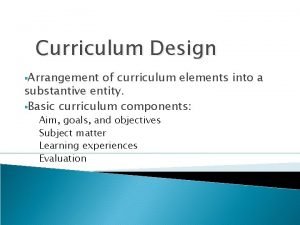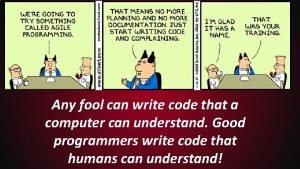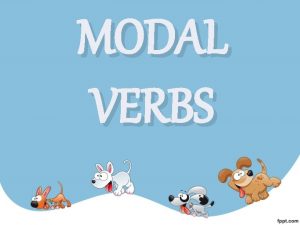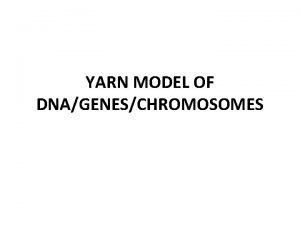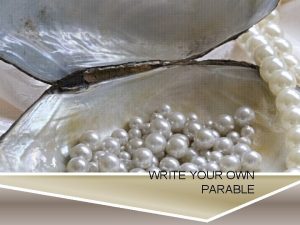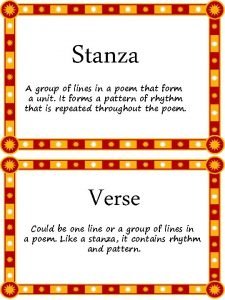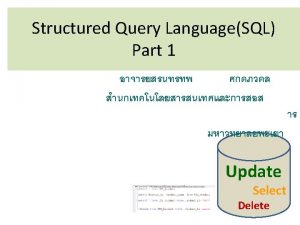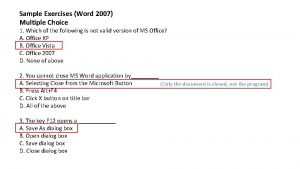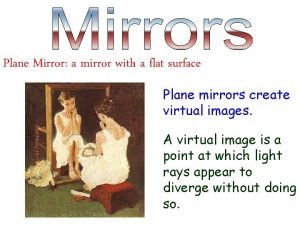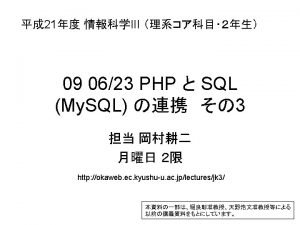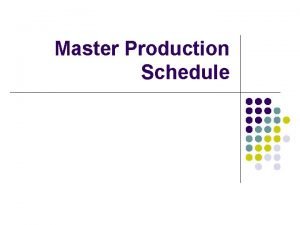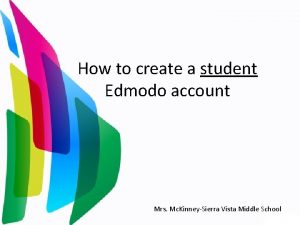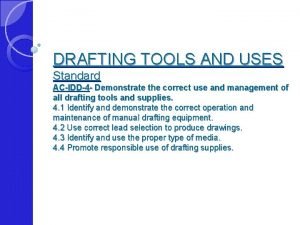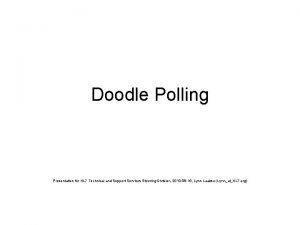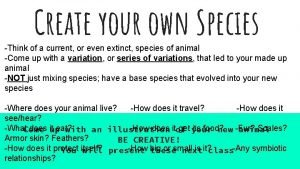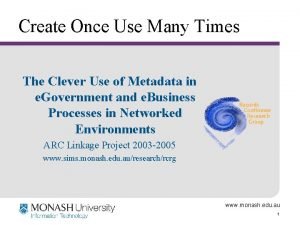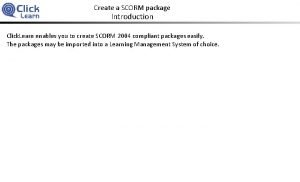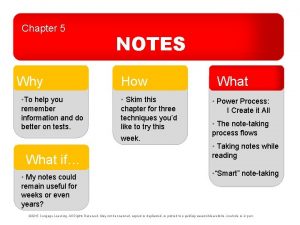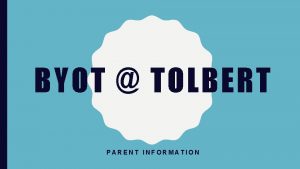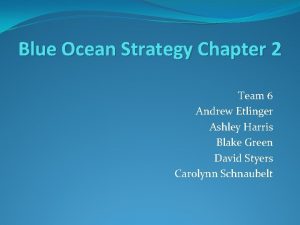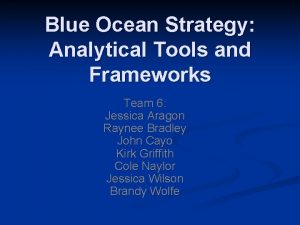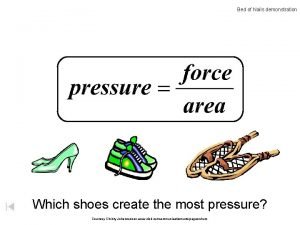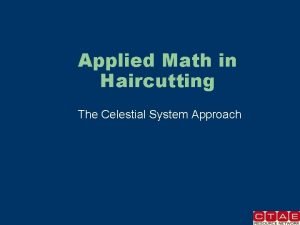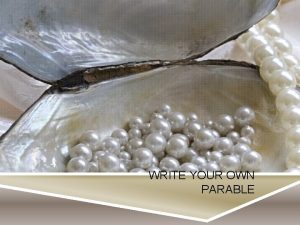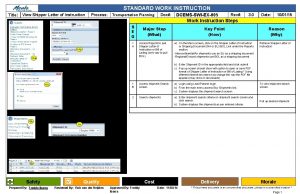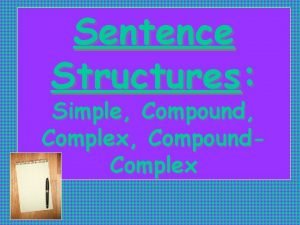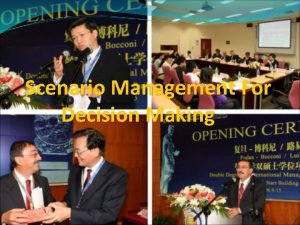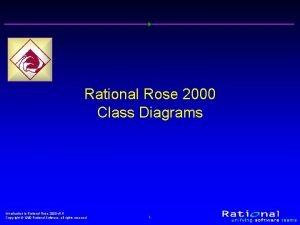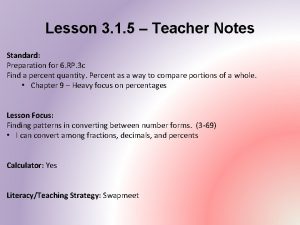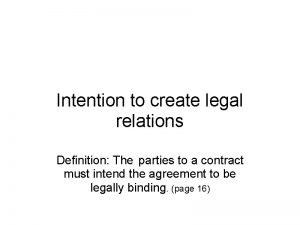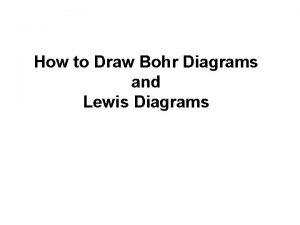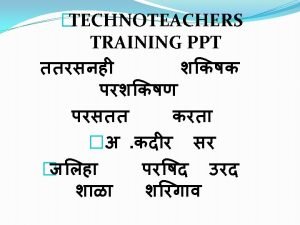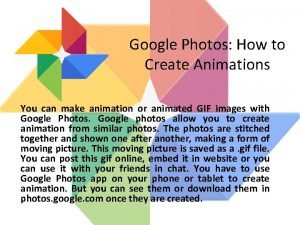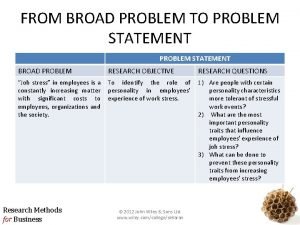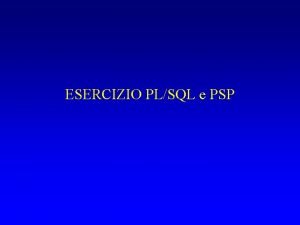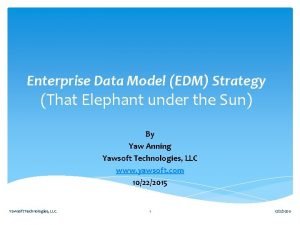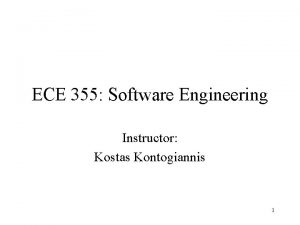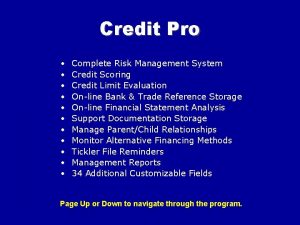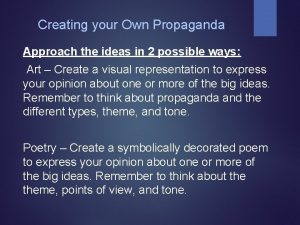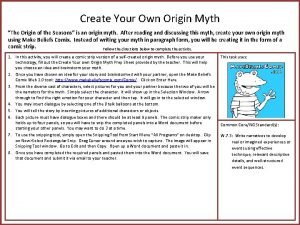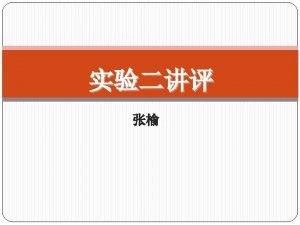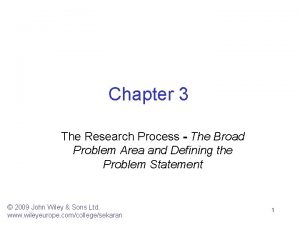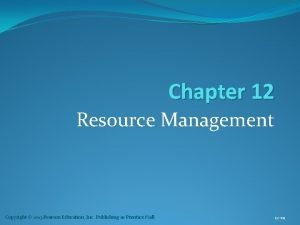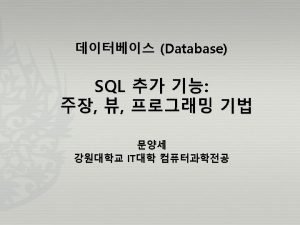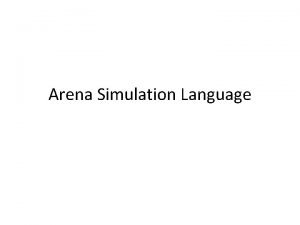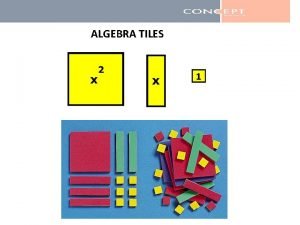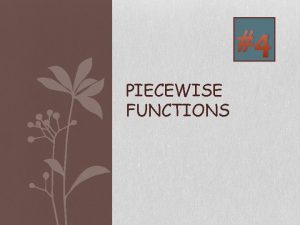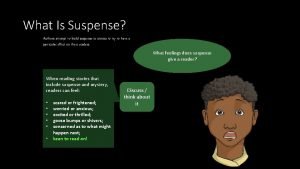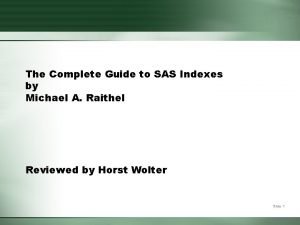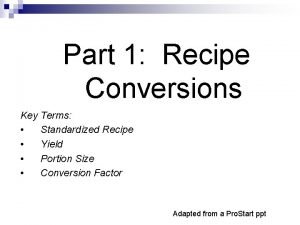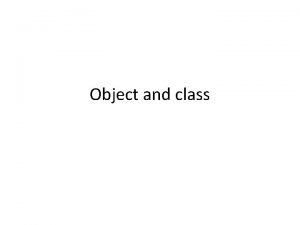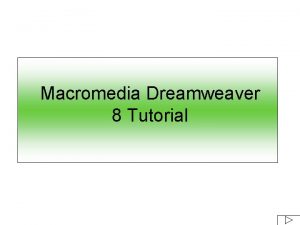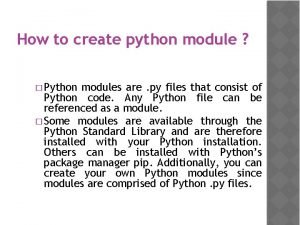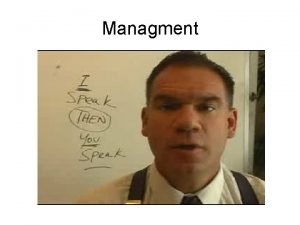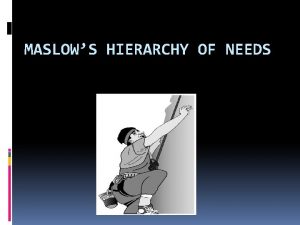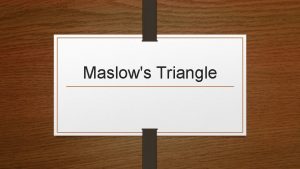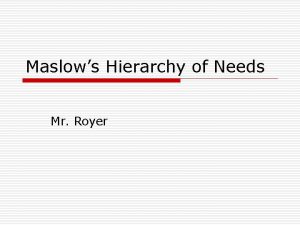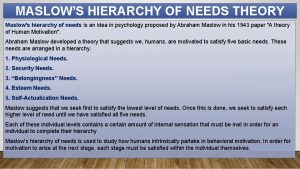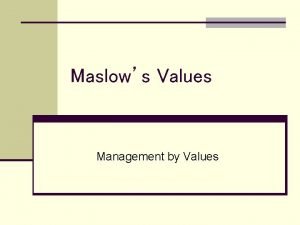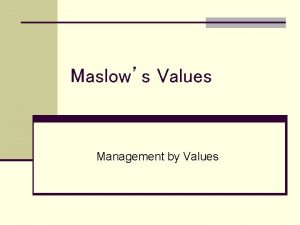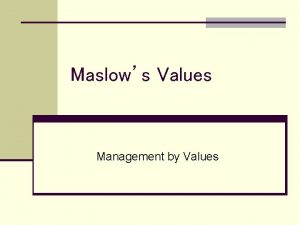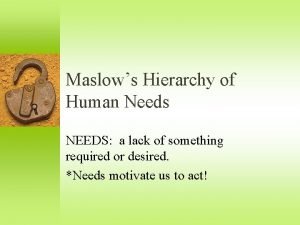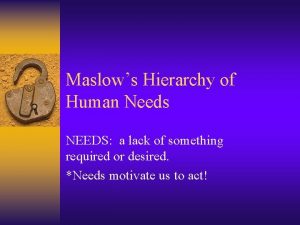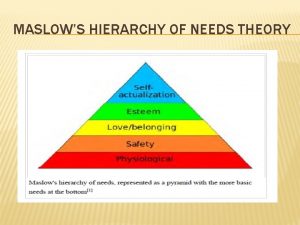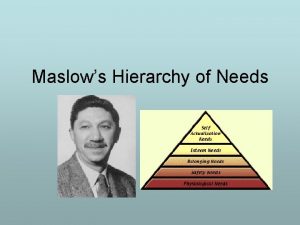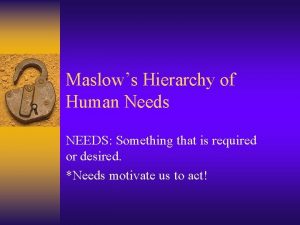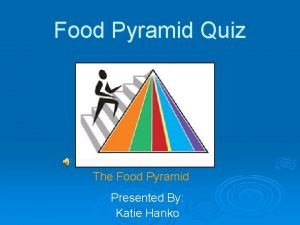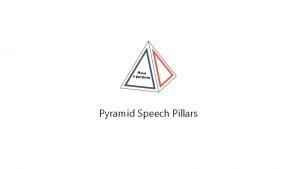Maslows pyramid Can marketers create needs Marketers do



























































































































































































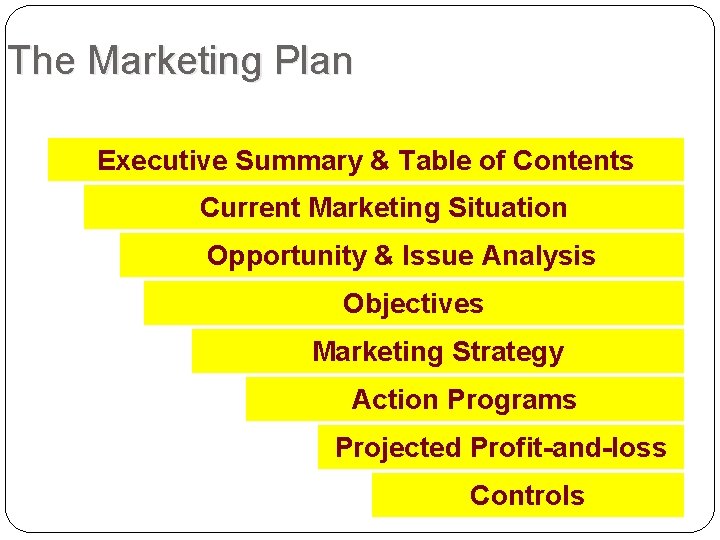
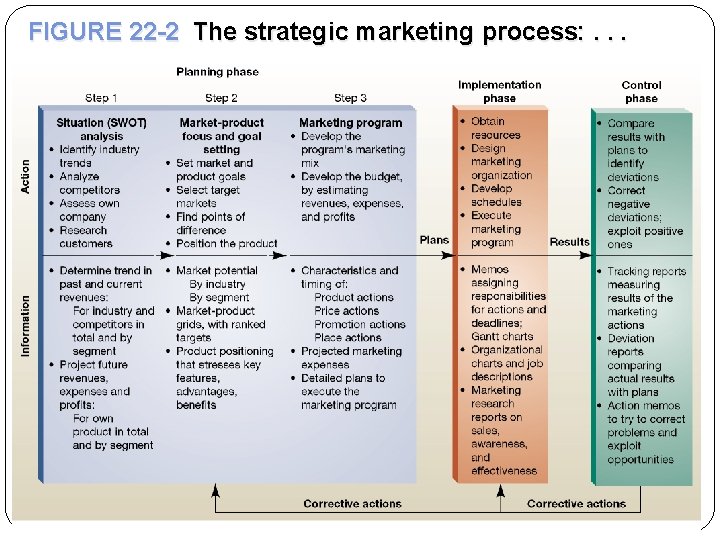
- Slides: 189











ﻧﻴﺎﺯ . ﻋﺪﻡ ﺩﺳﺘﺮﺳﻲ ﺑﻪ ﻳک ﺭﺿﺎﻣﻨﺪﻱ ﺍﺳﺎﺳﻲ ﺍﺳﺖ ﻧﻴﺎﺯ ﻳﻚ ﻓﻘﺪﺍﻥ ﺍﺳﺖ Maslow’s pyramid Can marketers create needs? “Marketers do not create needs: Needs preexist marketers. Marketers, along with Social factors, influence wants. Marketers might promote the idea that a Mercedes Would satisfy a person’s need for social status. They do not, however, create the need for social status. ” Kotler, p. 11

Maslow’s Hierarchy of Needs 5 Herzberg Mc. Clelland Selfactualization (self-development and realization) 4 Esteem needs (self-esteem, recognition) 3 2 12 1 Social needs (sense of belonging, love) Safety needs (security, protection) Physiological needs (food, water, shelter)

ﺧﻮﺍﺳﺘﻪ ﻫﺎ ﻋﻼﻗﻪ ﺧﺎﺻﻲ ﻫﺴﺘﻨﺪ کﻪ ﺑﺮﻃﺮﻑ کﻨﻨﺪﻫﺀ ﻣﻴﻞ ﻭ ، ﺧﻮﺍﺳﺘﻪ ﻫﺎ . ﻧﻴﺎﺯ ﺍﺳﺖ ؟؟؟؟ Adapt Maslow’s pyramid of needs to “wants. ” What type of wants can you identify on each level? Can you increase wants as you go up the ladder? 13

Other Theories Herzberg: Satisfiers vs. Dissatisfiers Mc. Clelland: Affiliation, Achievement, Power 14


Potential Product Augmented Product Expected Product Basic Product Core Need 16







Conceptualization of Strategy China’s most enduring game is Wei Qi 23 (pronounced way chee). Wei qi translates as game of surrounding pieces, it implies a concept of strategic encirclement. The players take turns placing stones (180 each) at any point on the board, building up positions of strength, while working to encircle and capture the opponent’s stones. Multiple contests take place simultaneously in different regions of the board. The balance of forces shifts incrementally with each move, as the players implement strategic plans and react to each other’s initiatives.

At the end of a well-played game, the board is 24 filled by partially interlocking areas of strength. The margin of advantage is often slim and to the untrained eye, the identity of the winner is not always immediately obvious. Chess on the other hand is about total victory. The purpose of the game is checkmate, to put the opposing king into a position where he cannot move without being destroyed. The vast majority of games end in total victory achieved by attrition or, more rarely a dramatic, skillful maneuver. The only other possible outcome is a draw; meaning the abandonment of the hope for victory by both

25

If chess is about the decisive battle, wei qi is about the protracted campaign. The chess player aims for total victory. The wei qi players seeks relative advantage. In chess the player always has the capability of the adversary in front of him; all the pieces are always fully deployed. The wei qi player needs to assess not only the pieces on the board but the reinforcements the adversary is in a position to deploy. 26

In chess the game usually begins as a struggle for the center of the board. Wei qi teaches the art of strategic encirclement. Where the skillful chess player aims to eliminate his opponent’s pieces in a series of head-on clashes, a talented wei qi player moves into “empty” spaces on the board, gradually mitigating the strategic potential of his opponent’s pieces. Chess produces single-mindedness. Wei chi produces strategic flexibility. 27

Sun Tzu’s Art of War Western strategists test their maxims by victories in battles; Sun Tzu tests by victories where battles have become unnecessary. For Sun Tzu, far better than challenging the enemy on the field of battle is undermining an enemy’s morale or maneuvering him into an unfavorable position from which escape is impossible. 28 Ultimate Excellence lies Not in winning every battle But in defeating the enemy without ever fighting’ The highest form of warfare is to attack the enemy’s strategy

To Sun Tzu, the strategist is akin to water flowing 29 downhill, automatically finding the swiftest and easiest course. A successful commander waits before charging into battle. He shies away from an enemy’s strength; he spends his time observing and cultivating changes in the strategic landscape. He studies the enemy’s preparations and his morale, husbands resources and defines them carefully, and plays on his opponent’s psychological weaknesses – until at last he perceives the opportune moment to strike he enemy at his weakest point.

He then deploys his resources swiftly and suddenly, rushing “downhill” along the path of least resistance, in an assertion of superiority that careful timing and preparation have rendered a fait accompli. The goal is to maneuver opponents into weakness while building up one’s own shi, or strategic position. 30

Marketing Strategies �Macro-Strategies � Porter’s Generic: Cost leader, Differentiation, Niche � Blue Ocean Strategy �Tactical Strategies: War Strategies �Growth Strategies: Ansoff �Strategic Tools: BCG and GE Matrix 31

The Blue Ocean Strategy Value innovation is a new way of thinking about and executing strategy that results in the creation of a blue ocean and a break from the competition. Importantly, value innovation defies one of the most commonly accepted dogmas of competitionbased strategy: the value-cost trade-off. It is conventionally believed that companies can either create greater value to customers at a higher cost or create reasonable value at a lower cost. Here strategy is seen as making a choice between differentiation and low cost. In contrast, those that seek to create blue oceans pursue differentiation and low cost simultaneously. 32

Cost Structure Utility and Price 33


35

Blue Ocean Strategy Tools The Strategy Canvas: It capture the current state of play in the known market space (factors the industry currently competes on in products, services, delivery…) 36

37

38

The Eliminate-Reduce-Raise. Create There is a third tool that is key to creation of blue oceans. It is a supplementary analytic to the four actions framework called the eliminate-reduce-raisecreate grid. The grid pushes companies not only to ask all four questions in the four actions framework but also to act on all four to create a new value curve. By driving companies to fill in the grid with the actions of eliminating and reducing as well as raising and creating, the grid gives companies at least an immediate benefit: It pushes them to simultaneously pursue differentiation and low costs to break the value-cost 39 trade-off.

40

Cirque du Soleil’s Case 41

Focus + Divergence + Compelling Tagline 42


�Warfare based strategies - This scheme draws parallels between marketing strategies and military strategies. There are many types of marketing warfare strategies, but they can be grouped into: �Offensive marketing warfare strategies �Defensive marketing warfare strategies �Flanking marketing warfare strategies �Guerrilla marketing warfare strategies 44

Offensive Marketing Warfare Strategy �Offensive marketing warfare strategies are a type of marketing warfare strategy designed to obtain an objective, usually market share, from a target competitor. In addition to market share, an offensive strategy could be designed to obtain key customers, high margin market segments, or high loyalty market segments. 45

Offensive Strategy � Assess the strength of the target competitor. Consider the amount of support that the target might muster from allies. Choose only one target at a time. � Find a weakness in the target’s position. Attack at this point. Consider how long it will take for the target to realign their resources so as to reinforce this weak spot. � Launch the attack on as narrow a front as possible. Whereas a defender must defend all their borders, an attacker has the advantage of being able to concentrate their forces at one place. � Launch the attack quickly. The element of surprise is worth more than a thousand tanks. 46

Defensive Mktg Warfare Strategy �Defensive marketing warfare strategies are a type of marketing warfare strategy designed to protect a company's market share, profitability, product positioning, or mind share. 47

Defensive Mktg Warfare Strategy � Always counter an attack with equal or greater force. � Defend every important market. � Be forever vigilant in scanning for potential attackers. Assess the strength of the competitor. Consider the amount of support that the attacker might muster from allies. � The best defense is to attack yourself. Attack your weak spots and rebuild yourself anew. 48

Flanking Mktg Warfare Strategies Avoid areas of likely confrontation. A flanking move always occurs in an uncontested area. � Make your move quickly and stealthfully. The element of surprise is worth more than a thousand tanks. � Make moves that the target will not find threatening enough to respond decisively to. � 49

Guerrilla Mktg Warfare Strategy �Wear down the enemy by a long series of minor attacks. �Rather than engage in major battles, a guerrilla force is divided into small groups that selectively attacks the target at its weak points. �To be effective, guerrilla teams must be able to hide between strikes. � The general form of the strategy is a sequence of attacking, retreating, and hiding, repeated multiple times in series. 50

Guerrilla Mktg Warfare Strategy �Because you never attack the enemy’s main force, you preserve your resources. �It is very flexible and can be adapted to any situation, offensive or defensive. �It is very difficult to counter with conventional methods. 51

Guerrilla Mktg Warfare Strategy targeted legal attacks on the competition product comparison advertising executive raiding short-term alliances selective price cuts deliberate sabotage of the competitions test markets, marketing research, advertising campaigns, or sales promotions � orchestrating negative publicity for a competitor � � � 52

Guerrilla Mktg Warfare Strategy � 53 A guerrilla marketer must be flexible. They must be able to change tactics very quickly : this may include abandoning a market segment, product line, brand, business model, or objective. Guerrillas are not ashamed to make a strategic withdrawal.

Google vs. Microsoft Case 54

MS / Google’s Missions Google's mission is to organize the world's information and make it universally accessible and useful. AT MS, our mission and values are to help people and businesses throughout the world realize their full potential. 55

Google’s Evolution of Services Search Engine and Adsense Gmail Orkut Google Pack – Desktop search + News + Mozilla Browser… Picasa Google Earth-Maps Google Library/Book Search Google Scholar Documents and Spreadsheet Google Mobile U-tube acquired for $2. 6 bn Server Farms Google acquired Double. Click for $3 bn Google assisting Yahoo! with add services to boost revenue Use of Web 2 Technologies Android phone with T-Mobile and HTC 56

57

Microsoft’s Response Purchase of Groove Networks in ? Investment towards expansion of Internet 58 services in 2005 -2006 by improving the Office Live experience Retirement of Bill Gates in 2008 The Vista fiasco Failed Gates’ advertisement campaign Failed Yahoo deal Announcement of Windows 7 with new networking features Alliance with Nokia and the development of windows 8 for mobile platform

Three Intensive Growth Strategies: Ansoff’s Product/Market Expansion Grid Existing products 59 Existing markets 1. Market penetration New markets 2. Market development New products 3. Product development 4. Diversification

Market Penetration Improve market share: either through tactical 60 marketing (advertising, promotion, price reductions) or create customer satisfaction and loyalty Increase product usage by asking fundamental questions: why isn’t the product or service used more? (example of Nescafe Cappuccino for young light users with sweet tooth). What are the barriers to increased use? Who are the light users, and can they be influenced to use more? What about the heavy users? British Airways offers lounge access to heavy users when not flying…

Market Penetration Provide reminder communication Provide a reason for more frequent use (updated headlines on news websites? Or check stocks on Yahoo!? ) Make the use easier (Microwaveable containers? ) Provide incentives (Frequent-flyer miles) Reduce undesirable consequences (Gentle shampoo for frequent use) Revitalize the brand (New VW Beetle) Find new applications ( Jell-O Salads) 61

Product Development Line extensions: by adding features (flavored Yoghurt 62 in tubes? ) Developing new generation Products (Google is under threat from Nextaris. com that combines search with social networking) Expand the product scope: broaden the use context (instead of being in the orange juice business, a firm might choose to be in the breakfast business. Or expand the pharmacy to include health checkups, photo-processing, opticians, …) New products for existing markets: add compatible products (Evian skincare, Gillete’s Venus shaving range, Mars’s chocolate drinks)

Product Development To succeed in product development the following questions will have to be answered: Will customers benefit from a systems capability or service convenience made possible by a broad product line? Do potential manufacturing, marketing, or distribution cost efficiencies exist? Can the brand be extended? Does the firm have the needed competencies and resources in R&D, manufacturing, and marketing to add the various products proposed? 63

Market Development Expand geographically Expand into new market segments Usage: the non-user Distribution channels Age Attribute preference Application-defined market (an airline offered a door-to-door, same day package delivery – place order on the website, a courier picks it up and delivers to the aircraft, another courier delivers to the recipient) 64

Diversification Related diversification (the new business has meaningful commonalities with the core business that can affect ROI) Exporting and exchanging assets and competencies (accounting firm offering excess office space to legal services) Brand Name (A name with visibility, associations, perceived quality, and loyalty – Disney into Disneylands into Disney Channel). Ask the following questions: Does the brand fit the new product context? Does the brand add value to the offering? 65 Will the extension enhance the brand name and image?

Diversification Related diversification (the new business has meaningful commonalities with the core business that can affect ROI) Functional and operational skills (in mktg, in distribution, in manufacturing, in R&D) Achieving economies of scale (increase efficiency – P&G and Gilette sought economies of scale in communications and distribution. In advertisement, P&G’s 4 billion pounds + Gilette’s 1. 25 billion pounds would enable wider reach and give them more leverage with large chains over margin pressures) 66

Diversification Unrelated diversification (with the objective of generate profit streams that are larger, less uncertain, and more stable) with the following incentives: Generate cash flow Enter business area with high ROI prospects Obtain a bargain price for a business Potential to refocus a firm Risk reduction Tax implications and reductions Obtaining liquid assets Vertical integration Defending against Takeover 67

Diversification Risks of unrelated diversification: Attention may be diverted from core business Managing new business may be difficult The new business may be overvalued 68

Stars 20%18%16%14%12%10%8%6%4%2%0 4 ? 3 5 ? 2 ? 1 Dogs Cash cow 8 6 10 x 69 Question marks ? Market Growth Rate The Boston Consulting Group’s Growth-Share Matrix 7 4 x 2 x 1. 5 x 1 x . 5 x. 4 x. 3 x. 2 x. 1 x Relative Market Share

Market Attractiveness: Competitive- Position Portfolio Classification MARKET ATTRACTIVENESS High Low Medium Strong 70 5. 00 3. 67 BUSINESS STRENGTH Medium 3. 67 2. 33 Weak 1. 00 Joints Aerospace fittings Hydraulic pumps Clutches 2. 33 Flexible diaphragms Fuel pumps Relief valve 1. 00 Invest/grow Selectivity/earnings Harvest/divest

71


Hammel and Prahalad’s Insideout Approach to Strategy The Outside-in approach (such as 73 the Five Forces model from Porter) places the market, the competition, and the customer at the starting point of the strategy process. The Core Competence model does the opposite by stating that in the long run, competitiveness derives from an ability to build a Core Competence, at lower cost and more speedily than competitors.

3 Tests for Identifying a Core Competence: 1. Provides potential access to a wide variety of markets. 2. Makes a significant contribution to the benefits of the product as perceived by the customer. 3. A CC should be difficult for competitors to imitate 74

Building a Core Competence A Core Competence is built through a 75 process of continuous improvement and enhancement. It should constitute the focus for corporate strategy. At this level, the goal is to build world leadership in the design and development of a particular class of product functionality. Top management can not be just another layer of accounting, but must add value by articulating the strategic architecture that

Once top management (with the help of 76 Strategic Business Units managers) have identified an all-embracing Core Competence, it must ask businesses to identify the projects and the people that are closely connected with it. Corporate auditors should perform an audit of the location, number, and quality of the people related to the CC. CC carriers should be brought together frequently to share ideas.

Core Rigidities Care must be taken not to let core competencies develop into core rigidities. A Corporate Competence is difficult to learn, but is difficult to unlearn as well. Companies that have spared no effort to achieve a competence, sometimes neglect new market circumstances or demands. They risk to be locked in by choices that were made in the past. 77

Hammel and Prahalad’s Insideout Approach to Strategy The Core Competence may result in unanticipated products. The real sources of advantage are to be found in management's ability to consolidate corporate-wide technologies and production skills into competencies, through which individual businesses can adapt quickly to changing circumstances. A Core Competence can be any combination of specific, inherent, integrated and applied knowledge, skills and attitudes. 78

The Value-Delivery Process (a) Traditional physical process sequence Make the product Design Procure Make product Sell the product Price Sell Advertise/ promote Distribute Service (b) Value creation & delivery sequence Choose the Value 79 Strategic marketing Provide the Value Communicate the Value Tactical marketing

Factors Influencing Company Marketing Strategy Marketing Suppliers Place g n tio ke za ar ni em M ga yst or s Political/ legal environment Product M pl ark sy ann etin st in g em g Target Price customers o imrga Mar pl niz ke em at ti en ionng ta a tio nd n Demographic/ economic environment in Ma fo rk sy rm eti st at ng em io n intermediaries Publics Promotion Competitors 80 Technical/ physical environment Social/ cultural environment




ﺗﻘﺴﻴﻢ ﺑﺎﺯﺍﺭ 1. 2. 3. Choose segments to target Choose those to avoid Consider combining

Designing a Marketing Mix to Appeal to Targets

Segmentation A market segment consists of group of customers who share a similar sets of wants. The marketer’s task is to identify the segments and decide which ones to target. Marketer does not create segments; they are already there! 86

87

Profiling of market segmentation according to “self” concepts: The automotive market showed four segments: participants, ego show-offs, functionalists, do-ityourselfers; the wrist-watch market in which five segments were identified: practicals, functionals, classicals, fashionables and sportspeople. 88

Segmentation in Practice 1. 2. 3. 4. 5. 6. 7. 89 Needs-Based Segmentation: Group customers based on similar needs and benefits sought by customer in solving a particular consumption problem. Segment Identification: For each needs-based segment, determine which demographics, lifestyles, and usage behaviors make the segment distinct and identifiable (actionable). Segment Attractiveness: Using predetermined segment attractiveness criteria (market growth, competitive intensity, and market access), determine overall attractiveness of each segment. Segment Profitability: Determine profitability. Segment Positioning: For each segment, create a “value proposition and product-price positioning based on that segment’s unique customer needs and characteristics. Segment “Acid Test”: Create “segment storyboards” to test the attractiveness of each segment’s positioning strategy. Mktg-Mix Strategy: Expand segment positioning strategy to include all aspects of the marketing mix: product, price, promotion, and place.

Consumer Behavior 2: Some Segmentation Models Consumer behavior 1: Mind of the market 90

Marketing Mix--Product Decisions New Product Development (Creativity) Product Categories Brand Packaging 91




95




Products can be classified into 3 groups according to Durability &Tangibility: Nondurable goods: Example of soda and soap Wide distribution Small markup Advertise heavily to induce trial and build preference 99

Products can be classified on the basis of shopping habits Convenience Goods Shopping Goods Specialty Goods Unsought Goods (gravestone, insurance, encyclopedia) require advertising and personal selling effort 100

Classification of Industrial Goods: Costliness and how they enter production Materials and parts: enter the manufacturer’s 101 product completely (raw and/or manufactured) – price, reliability, and service are key, brand & ads not very important Capital items: long-lasting goods that facilitate the development of finished products like installations and equipment – emphasize quality, feature, price & service Supplies and business services – short term goods that facilitate development of finished products – distribution becomes important + price and service

Product Differentiation � Form – size, shape, physical appearance � Features � Performance quality: low, average, high, superior? It’s 102 the level at which the product’s primarily characteristics operate. Look at customer & competitors… � Conformance quality: does it meet promised specification? � Durability: operating life under normal and stressful conditions � Reliability: not malfunction or fail over a specific time period � Repairability: ease of fixing a product when it malfunctions and fails


Brand Personality Dimensions of Jennifer Aaker Sincerity (down-to-earth, honest, 104 wholesome, cheerful) Excitement (daring, spirited, imaginative, up-to-date) Competence (reliable, intelligent, successful) Sophistication (upper class, charming) Ruggedness (outdoorsy, tough)

Down-to-earth = down-to-earth, family-oriented, small- town Honest = honest, sincere, real Wholesome = wholesome, original Cheerful = cheerful, sentimental, friendly Daring = daring, trendy, exciting Spirited = spirited, cool, young Imaginative = imaginative, unique Up to date = up to date, independent, contemporary Reliable = reliable, hard working, secure Intelligent = intelligent, technical, corporate Successful = successful, leader, confident Upper class = upper class, glamorous, good looking Charming = charming, feminine, smooth Outdoorsy = outdoorsy, masculine, Western Tough = tough, rugged 105





Brand equity, as defined by Keller occurs when a brand is known and has some strong, favorable and unique associations in a consumer’s memory. In this branding ladder, each step is dependent on successfully achieving the previous – from brand identity to brand meaning, brand responses and finally brand relationships. These steps in turn consist of six brand building blocks – salience, performance, imagery, judgments, feelings and resonance. 110

111 The ultimate aim is to reach the pinnacle– resonance – where a completely harmonious relationship exists between customers and the brand. Keller’s argument is as follows. The first step in building a strong brand is to ensure the correct brand identity. The purpose is to create an identification of the brand with customers, and an association in their minds with a specific product class or need. To do this, brand salience must exist, which represents aspects of brand awareness and the range of purchase and consumption situations in which the brand comes to mind. The salience building block is therefore made up of two sub-dimensions – need satisfaction and category identification.

Movie 112

Branding Options Branding Strategies Producer Strategy of Generic (Without name) 113 Strategy of Whole Different Unit Mixed sellers & Branding for Branding Retail Different different Sellers Products products

114






Tips on good packaging of the Product Bump up the visibility of the package Choose a color that contrasts with competitors Improve information on package Use the Web for virtual packaging Give your package an emotional appeal Add some excitement to the package (Coke wave) Increase the functionality of the package 120

Case: The New Coke Design When David Butler joined Coca-Cola (KO) almost five years ago, he was given, as he tells it, "the Post-it Note mandate: We need to do more with design. Go figure it out. " 121

"If I'm at a meeting with manufacturing people, I'll say: 'How can we make the can feel colder, longer? ', " he says as an example. "Or, 'How can we make the cup easier to hold? '" In other words, he talks about the benefits of smart design in a language to which those he's talking to can relate. Butler leads a team of 60 designers—a mix of graphic and industrial designers, some poached from companies such as Apple (AAPL), Nike (NKE), MTV (VIA), Target (TGT), and Electrolux— at four centers around the world. 122

When Butler reviewed the state of design at Coca -Cola on his arrival, evaluating everything from the branding created for then-recent 2004 Olympics in Athens to the process that the company's 300 -plus bottling partners went through to get approval for new bottle designs to the customer experience of buying a Coke from a vending machine, he found a lot that needed fixing. 123

Coca-Cola was a global company with 450 brands, more than 300 different models of vending machines, innumerable bottling and retail partners, and no consistent global design standards. 124

Butler addressed his efforts on identifying basic problems that design can solve. His strategy has focused on three areas critical to Coca-Cola—brand identity, user experience, and sustainability. 125

126

Supersizing and Downsizing Packages: A Research by Insead If a company increases the size of its packaging in one dimension, consumers perceive it to be much larger and so assume they’re getting a better deal and are more likely to buy it. If a company increases the product size by the same volume but the package is expanded in three dimensions – not just one – consumers don't perceive as big of a change.

Services Differentiation (7 Ps: People, Physical Appearance, Processes + 4 Ps Ordering ease Delivery Installation Customer training Customer consulting Maintenance and repair 128


Are there similarities between products and services? 130

Price Decisions

Setting the Price In setting a product’s price, marketers follow a six -step procedure: (1) selecting the pricing objective; (2) determining demand; (3) estimating costs; (4) analyzing competitors’ costs, prices, and offers; (5) selecting a pricing method; and (6) selecting the final price. 132

1. Pricing Objectives Survival. Maximum current profit. To maximize current profits, 133 companies estimate the demand costs associated with alternative prices and then choose the price that produces maximum current profit, cash flow, or return on investment. Maximum market share. Firms such as Texas Instruments choose this objective because they believe that higher sales volume will lead to lower unit costs and higher longrun profit. With this market-penetration pricing, the firms set the lowest price, assuming the market is price sensitive. Maximum market skimming. Many companies favor setting high prices to “skim” the market. Product-quality leadership. Companies such as Maytag that aim to be product-quality leaders will offer premium products at premium prices. Because they offer top quality plus innovative features that deliver wanted benefits, these firms can charge more.

2. Determining Demand Companies can use one of three basic methods to 134 estimate their demand curves. The first involves statistically analyzing past prices, quantities sold, and other factors to estimate their relationships. However, building a model and fitting the data with the proper techniques calls for considerable skill. The second approach is to conduct price experiments, as when Bennett and Wilkinson systematically varied the prices of several products sold in a discount store and observed the results. An alternative here is to charge different prices in similar territories to see how sales are affected. The third approach is to ask buyers to state how many units they would buy at different proposed prices. One problem with this method is that buyers might understate their purchase










Step 4: Analyzing Competitors’ Costs, Prices, and Offers Within the range of possible prices determined by market demand company costs, the firm must take into account its competitors’ costs, prices, and possible price reactions. If the firm’s offer is similar to a major competitor’s offer, then the firm will have to price close to the competitor or lose sales. If the firm’s offer is inferior, it will not be able to charge more than the competitor charges. If the firm’s offer is superior, it can charge more than does the competitor—remembering, however, that competitors might change their prices in response at any time. 144

5. Pricing Methods Covered Price: fixed cost + variable cost Desired Return: price = unit cost + (desired return * invested capital)/ Q Perceived value pricing Going rate pricing: following the industry leader in pricing Sealed-bid 145

Place decisions

Why intermediaries? Intermediaries normally achieve superior efficiency in making goods widely available and accessible to target markets. Through their contacts, experience, specialization, and scale of operation, these specialists usually offer the firm more than it can achieve on its own. 147

channel perform a number of key functions: ➤ They gather information about potential and current customers, competitors, and other actors and forces in the marketing environment. ➤ They develop and disseminate persuasive communications to stimulate purchasing. ➤ They reach agreement on price and other terms so that transfer of ownership or possession can be effected. ➤ They place orders with manufacturers. ➤ They acquire the funds to finance inventories at different lev in the marketing channel. ➤ They assume risks connected with carrying out channel work. ➤ They provide for the successive storage and movement of physical products. ➤ They provide for buyers’ payment of their bills through banks and other financial institutions. ➤ They oversee actual transfer of ownership from one organizatio or person to another. 148

Channels provide 5 service outputs: 1. Lot size: The number of units the channel permits a 149 typical customer to purchase on one occasion. In buying cars for its fleet, Hertz prefers a channel from which it can buy a large lot size; a household wants a channel that permits buying a lot size of one. 2. Waiting time: The average time customers of that channel wait for receipt of the goods. Customers normally prefer fast delivery channels. 3. Spatial convenience: The degree to which the marketing channel makes it easy for customers to purchase the product. Chevrolet, for example, offers greater spatial convenience than Cadillac, because there are more Chevrolet dealers. 4. Product variety: The assortment breadth provided by the channel. Normally, customers prefer a greater assortment, which increases the chance of finding what they need. Relentless expansion of product variety is the special edge that has helped Amazon. com maintain its lead in Internet retailing. 5. Service backup: The add-on services (credit, delivery, installation, repairs) provided by the channel. The greater the service backup, the greater the work provided by the channel.

Number of Intermediaries 150 ➤ Exclusive distribution means severely limiting the number of intermediaries. Firms such as automakers use this approach when they want to maintain control over the service level and service outputs offered by the resellers. Often it involves exclusive dealing arrangements, in which the resellers agree not to carry competing brands. ➤ Selective distribution involves the use of more than a few but less than all of the intermediaries who are willing to carry a particular product. In this way, the producer avoids dissipating its efforts over too many outlets, and it gains adequate market coverage with more control and less cost than intensive distribution. Nike, for example, sells its athletic shoes and apparel through seven types of outlets: (1) specialized sports stores, which carry a special line of athletic shoes; (2) general sporting goods stores, which carry a broad range of styles; (3) department stores, which carry only the newest styles; (4) mass-merchandise stores, which focus on discounted styles; (5) Nike town stores, which feature the complete line; (6) factory outlet stores, which stock mostly seconds and closeouts, and (7) the popular Fogdog Sports site (www. fogdog. com), its exclusive Web retailer. ➤ Intensive distribution consists of the manufacturer placing the goods or services in as many outlets as possible. This strategy is generally used for items such as tobacco products, soap, snack foods, and gum, products for which the consumer requires a great deal of location

Terms and Responsibilities From an ethical perspective, each channel member must be treated 151 respectfully and given the opportunity to be profitable. Other key rights and responsibilities include: ➤ Price policy. The producer establishes a price list and a schedule of discounts and allowances that intermediaries see as equitable and sufficient. ➤ Conditions of sale. The producer sets payment terms and guarantees for each sale. Most producers grant cash discounts to distributors for early payment; they may also offer guarantees against defective merchandise or price declines. ➤ Territorial rights. The producer defines the distributors’ territories and the terms under which it will enfranchise other distributors. Distributors normally expect to receive full credit for all sales in their territory, whether or not they did the selling. ➤ Mutual services and responsibilities. The producer must carefully lay out each party’s duties, especially in franchised and exclusive-agency channels. Mc. Donald’s provides franchisees with a building, promotional support, a record-keeping system, training, and technical assistance. In turn, its franchisees are expected to satisfy company standards regarding physical facilities, cooperate with new promotional programs, and buy supplies from specified vendors.

Channel Management Decisions After a company has chosen a channel alternative, it must select, train, motivate, and evaluate the individual intermediaries. Then, because neither the marketing environment nor the product life cycle remains static, the company must be ready to modify these channel arrangements over time. 152

Selecting Channel Members During the selection process, producers should determine what characteristics distinguish the better intermediaries. They will want to evaluate number of years in business, other lines carried, growth and profit record, solvency, cooperativeness, and reputation. If the intermediaries are sales agents, producers will want to evaluate the number and character of other lines carried and the size and quality of the sales force. If the intermediaries are store or Internet retailers that want exclusive distribution, the producer will want to evaluate locations, brand strength, future growth potential, and type of clientele. 153

Training Channel Members Companies need to plan and implement careful training programs for their distributors and dealers because the intermediaries will be viewed as the company by end users. Microsoft, for example, requires third-party service engineers who work with its software applications to complete a number of courses and take certification exams. Those who pass are formally recognized as Microsoft Certified Professionals, and they can use this designation to promote business. 154

Motivating Channel Members The most successful firms view their channel members in the same way they view their end users. This means determining their intermediaries’ needs and then tailoring the channel positioning to provide superior value to these intermediaries. To improve intermediaries’ performance, the company should provide training, market research, and other capabilitybuilding programs. And the company must constantly reinforce that its intermediaries are partners in the joint effort to satisfy customers. 155

Evaluating Channel Members Producers must periodically evaluate intermediaries’ performance against such standards as sales-quota attainment, average inventory levels, customer delivery time, treatment of damaged and lost goods, and cooperation in promotional and training programs. 156

Channel Conflict Management: ➤ Adoption of superordinate goals. Channel members come to an agreement on the fundamental goal they are jointly seeking, whether it is survival, market share, high quality, or customer satisfaction. They usually do this when the channel faces an outside threat, such as a more efficient competing channel, an adverse piece of legislation, or a shift in consumer desires. ➤ Exchange persons between channel levels. General Motors executives might work for a short time in some dealerships, and some dealers might work in GM’s dealer policy department, as a way of helping participants appreciate each other’s viewpoint. ➤ Cooptation is an effort by one organization to win the support of the leaders of another organization by including them in advisory councils, boards of directors, trade associations, and the like. As long as the initiating organization treats the leaders seriously and listens to their opinions, cooptation can reduce conflict. ➤ Diplomacy, mediation, arbitration for chronic or acute conflict. Diplomacy takes place when each side sends a person or group to meet with its counterpart to resolve the conflict. Mediation means having a skilled, neutral third party reconcile the two parties’ interests. Arbitration occurs when the two parties agree to present their views to an arbitrator and finally accept the arbitrator’s decision. 157

Promotion Decisons



The 5 Elements of the Promotional Mix Marketing Mix Other 3 elements Promotion Integrated Marketing Communications Personal Selling 161 Sales Promotion Public Relations Direct Promotion Mass Media

The Marketing Communications Mix Advertising Any Paid Form of Nonpersonal Presentation by an Identified Sponsor. Sales Promotion Short-term Incentives to Encourage Trial or Purchase. Public Relations Personal Selling Direct Marketing 162 Protect and/or Promote Company’s Image/products. Personal Presentations. Direct Communications With Individuals to Obtain an Immediate Response.

Major Decisions in Advertising O b j e c ti v e s S e tti n g Bu d g et Deci si o n s Me s s a g e D e c i s i o n s Me d i a D e c i s i o n s C a m p a i g n E v a l u a ti o n

Advertising Objectives Specific Communication Task Accomplished with a Specific Target Audience During a Specific Period of Time I n fo r m a ti v e A d v e r ti s i n g P e r s u a s i v e A d v e r ti s i n g Bu i l d P ri mary Deman d B u i l d S e l e c ti v e D e m a n d C o m p a r i s o n A d v e r ti s i n g R e m i n d e r A d v e r ti s i n g C o m p a r e s O n e B r a n d to A n o th e r Keep s Co n su mers T h i n ki n g A b o u t a P r o d u c t.

The Five Ms of Advertising Message Mission Sales goals Advertising objectives Money Message generation Factors to consider: Message evaluation and selection Stage in PLC Message execution Market share and consumer base Competition and clutter Advertising frequency Product substitutability Social-responsibility review Media Reach, frequency, impact Major media types Specific media vehicles Media timing Geographical media allocation Measurement Communication impact Sales impact

Advertising Evaluation A d v e r ti s i n g P r o g r a m E v a l u a ti o n C o m m u n i c a ti o n E ffe c ts S a l e s E ffe c ts I s th e A d C o m m u n i c a ti n g W e l l ? I s th e A d I n c r e a s i n g S a l e s ?

Consumer Promotion Consumer-Promotion Objectives Entice Consumers to Try a New Product Lure Customers Away From Competitors’ Products Get Consumers to “Load Up’ on a Mature Product Hold & Reward Loyal Customers Consumer Relationship Building Consumer-Promotion Tools Samples Coupons Cash Refunds Advertising Specialties Patronage Rewards Contests Price Packs Premiums Sweepstakes Games Point-of-Purchase Displays

Major Public Relations Tools Web Site News Public Service Activities Speeches Corporate Identity Materials Audiovisual Materials Special Events Written Materials

Designing the Sales Force EQ Slides & Test S a l e s fo r c e o b j e c ti v e s S a l e s fo r c e s tr a te g y S a l e s fo r c e s tr u c tu r e Sales force size S a l e s fo r c e c o m p e n s a ti o n

Sales Force Structures Territorial Market Product Complexity

Workload Approach to Sales Force Size Classify customers by size Determine desirable call frequencies Determine total sales calls needed per year Determine average number of sales calls per sales representative per year Divide total by number per rep

Sales Force Compensation Fixed Variable Expense Allowances Benefits

Managing the Sales Force R e c r u i ti n g & s e l e c ti n g s a l e s r e p r e s e n ta ti v e s T r a i n g s a l e s r e p r e s e n ta ti v e s S u p e r v i s i n g s a l e s r e p r e s e n ta ti v e s Mo ti v a ti n g s a l e s r e p r e s e n ta ti v e s E v a l u a ti n g s a l e s r e p r e s e n ta ti v e s

Improving Sales Force Effectiveness T r a i n g i n s a l e s te c h n i q u e s & p r o fe s s i o n a l i s m N e g o ti a ti o n s k i l l s R e l a ti o n s h i p -b u i l d i n g s k i l l s

Steps in the Selling Process Telling the Product “Story” to the Buyer, and Showing the Product Benefits. Knowing How to Meet the Buyer to Get the Relationship Off to a Good Start. Identifying and Screening For Qualified Potential Customers. Step 1. Prospecting and Qualifying

Steps in the Selling Process S te p 5. H a n d l i n g O b j e c ti o n s Seeking Out, Clarifying, and Overcoming Customer Objections to Buying. S te p 6. C l o s i n g Asking the Customer for the Order. S te p 7. F o l l o w -U p Following Up After the Sale to Ensure Customer Satisfaction and Repeat Business.

Movie Please take note while watching the movie. What are the strengths and weaknesses of Mike in his sales management? What should have been avoided in the sales meeting? 177

Uses for Databases in Direct Mktg 1. Identify Prospects 2. Match Customers & Offers 3. Deepen Customer Loyalty 4. Reactivate Customers

Direct Marketing Channels Face-to-Face Selling Online Marketing Direct-Mail Marketing Kiosk Marketing Catalog Marketing Direct-Response TV Marketing Telemarketing

Communication Tools over the Lifecycle 180


FIGURE 18 -4 How the importance of elements varies during the consumer’s purchase decision Marketing Seventh Edition Kerin, Berkowitz, Hartley & Rudelius 182

183

Positioning Strategy 184

We achieve positioning by Attributes and Associations 185

Example of Value Propositions Demand States and Mktg Tasks 186 Co & Product Target Customers Benefits Price Value Proposition Perdue (Chicken) Qualityconscious consumers of chicken Tenderness 10% Premium More tender golden chicken at a moderate premium price Volvo (Station Wagon) Safetyconscious “upscale” families Durability and Safety 20% Premium The safest, most durable wagon in which your family can ride Domino’s (Pizza) Convenienceminded pizza lovers Delivery speed and good quality 15% A good, hot pizza delivered to your door within 30 minutes of ordering, at a moderate price

What do competitors do against companies that have strong positions? Strengthen current position in customer’s mind (Avis: We’re # 2. We try Harder or 7 -Up’s “the Uncola”) Grab unoccupied position (3 Musketeer’s position as having 45% less fat than other chocolate bars) De- or Reposition (Wendy’s famous commercial in which a 70 -year-old woman named Clara looked at a competitor’s burger and said: “Where’s the beef? ”) 187

The Marketing Plan Executive Summary & Table of Contents Current Marketing Situation Opportunity & Issue Analysis Objectives Marketing Strategy Action Programs Projected Profit-and-loss 188 Controls

FIGURE 22 -2 The strategic marketing process: . . . 189
 Ehlsa
Ehlsa Maslows theory maintains that
Maslows theory maintains that Maslows behovspyramide eksempler
Maslows behovspyramide eksempler Købemotiver
Købemotiver Teori dorothea orem
Teori dorothea orem Det humanistiska perspektivet
Det humanistiska perspektivet þarfapýramídi maslows
þarfapýramídi maslows Behovspyramiden
Behovspyramiden Jika noel(create(q)) adalah 0, maka front(create(q)) adalah
Jika noel(create(q)) adalah 0, maka front(create(q)) adalah Primary needs and secondary needs
Primary needs and secondary needs Primary needs and secondary needs
Primary needs and secondary needs Alpha press murray
Alpha press murray Strategic gender needs and practical gender needs
Strategic gender needs and practical gender needs Target needs and learning needs
Target needs and learning needs The peak of maslow's hierarchy of needs pyramid represents
The peak of maslow's hierarchy of needs pyramid represents Petroleum equalisation fund
Petroleum equalisation fund Marketers of automobiles financial services and travel
Marketers of automobiles financial services and travel Self concept attachment
Self concept attachment 10 tipe entitas pemasaran
10 tipe entitas pemasaran Marketers classify innovations based on their
Marketers classify innovations based on their Do marketers promise miracles
Do marketers promise miracles Dealing with competition marketing management
Dealing with competition marketing management Captive product pricing strategy
Captive product pricing strategy Email marketers in redondo beach california
Email marketers in redondo beach california To make place decisions, marketers select the right
To make place decisions, marketers select the right To make place decisions marketers select the right
To make place decisions marketers select the right Yahoo com internet marketers
Yahoo com internet marketers Marketers need to consider the state of trading economy
Marketers need to consider the state of trading economy Target marketers who are combiners
Target marketers who are combiners Can god create a square circle
Can god create a square circle Why can banks create money
Why can banks create money Satisfying needs part 1
Satisfying needs part 1 A company needs to design a cylindrical can that holds 475
A company needs to design a cylindrical can that holds 475 If you can imagine it you can achieve it
If you can imagine it you can achieve it You can tell harris about it just ____(easily) as i can
You can tell harris about it just ____(easily) as i can If you think you can you can poem
If you think you can you can poem If you can't measure it you can't control it
If you can't measure it you can't control it If you can't measure it, you can't manage it
If you can't measure it, you can't manage it Percussions corporelles
Percussions corporelles Elements of curriculum design
Elements of curriculum design You can tell harris about it just ____(easily) as i can.
You can tell harris about it just ____(easily) as i can. Positive comparative superlative
Positive comparative superlative He can speak english
He can speak english Look at the pictures and complete with can or can't
Look at the pictures and complete with can or can't Bear hunt song dr jean
Bear hunt song dr jean Through you blind eyes are open
Through you blind eyes are open You can t manage what you don t measure
You can t manage what you don t measure Talk en futuro
Talk en futuro Any fool can write code that a computer can understand
Any fool can write code that a computer can understand So long as men can breathe or eyes can see
So long as men can breathe or eyes can see Langfristiges fremdkapital
Langfristiges fremdkapital Express ability and inability
Express ability and inability Got my own
Got my own Model yarn
Model yarn Metasploit plugins
Metasploit plugins My own parable
My own parable How to create a work cited page
How to create a work cited page Create vray proxy
Create vray proxy Virtual pet scratch
Virtual pet scratch Create bootable usb
Create bootable usb How to create a scenario summary report in excel
How to create a scenario summary report in excel Tone and mood paragraph examples
Tone and mood paragraph examples Cars model research introduction
Cars model research introduction Legend of sleepy hollow theme
Legend of sleepy hollow theme Imbalances in earth’s heat energy help to create weather.
Imbalances in earth’s heat energy help to create weather. A group of lines
A group of lines Name ddl commands create alter drop truncate
Name ddl commands create alter drop truncate Sonnet poems 10 syllables 14 lines
Sonnet poems 10 syllables 14 lines Android udp client
Android udp client 421 could not create socket
421 could not create socket Exercises for microsoft word
Exercises for microsoft word Type of mirror with a flat surface
Type of mirror with a flat surface Mysql not exists
Mysql not exists Mysql create table
Mysql create table Appendix title page
Appendix title page What is master production schedule
What is master production schedule Bulbourethral gland
Bulbourethral gland Literature review tutor
Literature review tutor How to create defect in jira
How to create defect in jira Waffling paragraph
Waffling paragraph Edmodo create account
Edmodo create account Elements and principles of hair design
Elements and principles of hair design Why do people create, structure, and change governments?
Why do people create, structure, and change governments? Free verse poem generator
Free verse poem generator All about food chains
All about food chains How to create flexible budget
How to create flexible budget Using line to create value
Using line to create value @expand eviews
@expand eviews 10 drafting tools
10 drafting tools Doodle admin link
Doodle admin link Design your own coat of arms
Design your own coat of arms Technical writer portfolio example
Technical writer portfolio example Create usi number
Create usi number Prezi sign up
Prezi sign up Create your own species
Create your own species Create your own civilization
Create your own civilization Create once use many times
Create once use many times How to create a scorm file
How to create a scorm file Forensic duplication
Forensic duplication The power process: “i create it all” is:
The power process: “i create it all” is: For the view create view instructor_info as
For the view create view instructor_info as Https //kahoot.it create
Https //kahoot.it create Blue ocean floor
Blue ocean floor Eliminate reduce raise create grid
Eliminate reduce raise create grid Which shoes create the most pressure
Which shoes create the most pressure Back partings are used to create the illusion of width
Back partings are used to create the illusion of width Sap pi abap proxy
Sap pi abap proxy The inca create a mountain empire
The inca create a mountain empire Create a hair and beauty image
Create a hair and beauty image Why is it necessary to create a datum when marking out
Why is it necessary to create a datum when marking out Learning task 1 draw a face
Learning task 1 draw a face Create your own parable
Create your own parable Touching spirit bear chapter questions and answers
Touching spirit bear chapter questions and answers Research problem statement and objectives examples
Research problem statement and objectives examples How was sonni ali able to create such a wealthy kingdom?
How was sonni ali able to create such a wealthy kingdom? Introductory hooks
Introductory hooks Create shippers letter of instruction
Create shippers letter of instruction Compound sentence rule
Compound sentence rule Create a scenario summary report
Create a scenario summary report Hybris create new extension
Hybris create new extension Class diagram in rational rose
Class diagram in rational rose What are the five principles of hair design
What are the five principles of hair design Presenters name
Presenters name Acrostic poem sound
Acrostic poem sound How to create a memo in word 2016
How to create a memo in word 2016 Create your azure free account today
Create your azure free account today Match col
Match col Create your own tribe
Create your own tribe Lesson 3 percents and decimals
Lesson 3 percents and decimals Keebs solution
Keebs solution What is drama
What is drama The scenery backdrops and furniture that create the setting
The scenery backdrops and furniture that create the setting Definition of intention to create legal relations
Definition of intention to create legal relations Write the creed
Write the creed Pottasium bohr diagram
Pottasium bohr diagram Accounts receivable wikipedia
Accounts receivable wikipedia Http://प
Http://प How to make animation in google photos
How to make animation in google photos Example of statement of the problem in research
Example of statement of the problem in research Create table plsql
Create table plsql How to create an enterprise data model
How to create an enterprise data model Emphasis through isolation
Emphasis through isolation How does the author use characterization to create satire?
How does the author use characterization to create satire? Ece355 create resume
Ece355 create resume Dcjs renewal fee
Dcjs renewal fee Credit scoring excel
Credit scoring excel Create your own propaganda
Create your own propaganda Create a political party project
Create a political party project Create your own myth
Create your own myth Create database school
Create database school Awb copy
Awb copy How to write an alternative ending to a story
How to write an alternative ending to a story How to commit eclipse project to github
How to commit eclipse project to github Short goodwill messages
Short goodwill messages Broad area of research example
Broad area of research example Chapter 2 life skills milady workbook answers
Chapter 2 life skills milady workbook answers Chapter 16 haircutting milady
Chapter 16 haircutting milady How to create a resource loading chart
How to create a resource loading chart 4 action framework
4 action framework Create assertion sql
Create assertion sql Arena run setup
Arena run setup Zero pairs
Zero pairs Evaluate piecewise function examples with answers
Evaluate piecewise function examples with answers Site:slidetodoc.com
Site:slidetodoc.com Writers can use to build suspense.
Writers can use to build suspense. How do consumers indirectly create manufacturing waste
How do consumers indirectly create manufacturing waste Scratch.mit.edu
Scratch.mit.edu Draw a motif and create a design using translation symmetry
Draw a motif and create a design using translation symmetry How do authors create mood
How do authors create mood What did claus oldenburg create sculptures of?
What did claus oldenburg create sculptures of? Sas create index
Sas create index Based on jupiter's prophecy create a poster of the romans
Based on jupiter's prophecy create a poster of the romans Create user username identified by password
Create user username identified by password Servlet mcq
Servlet mcq Scratch create account
Scratch create account Roku account setup
Roku account setup Spiritual function of art
Spiritual function of art Li ping phar
Li ping phar C program for polynomial addition using linked list
C program for polynomial addition using linked list Dos and don'ts of persuasive writing
Dos and don'ts of persuasive writing Formal planning may create rigidity.
Formal planning may create rigidity. Standard recipe
Standard recipe Is it possible to create object of empty class
Is it possible to create object of empty class File sharing management system
File sharing management system How to create an anchor in dreamweaver
How to create an anchor in dreamweaver How to create a web page using dreamweaver 8
How to create a web page using dreamweaver 8 How to do inequalities word problems
How to do inequalities word problems Biological constraints
Biological constraints How to create xlsform
How to create xlsform Create python module
Create python module


